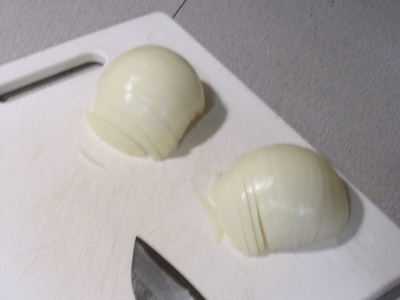Barbara Stafford comes to LCC!
Last Thursday, Barbara Stafford came to visit LCC as part of our distinguished speaker series. I read her book Visual Analogy last year, although whether I understood it or not is a different matter entirely. Stafford’s background is in art history, although recently she has expanded into the study of the cognitive dimensions and neuroscience of images. Her talk had the quality of weaving in and out among a number of conceptual domains, putting together a complex web that related to a few specific themes.
Because I am boring and no fun, one of the things I am going to try to to is unravel Stafford’s carefully woven tapestry, and isolate her exploration into more explicit bullets and categories. My drive to do things like this may strike the more poetic minded as undercutting her message, but without finding a graspable end of the woven yarn, it is hard to get the message at all.
Stafford’s central theme in her talk is the notion of attentiveness. One of her goals is to devise a taxonomy of attentiveness. In the process of exploring the kinds of attentiveness, there are a few binary conflicts: Speed versus slowness, automaticity versus spontaneity, and focus versus attention. Her exploration weaves through each of these conflicts, valuing the virtues of slowness, spontaneity, and attentiveness. The last of these conflcits is perhaps the easiest to explain.
Attentiveness is not focus. It is related: a chiefly visual practice, but takes a different aim in mind. Attentiveness is embodied, whereas focus is disembodied. An observer is focused when engaged with something at a distance, and with a specific objective in mind. Attentiveness is aware of the subject in its surroundings. Attentiveness is has many channels, and makes use of emotion and the body. Attention encompases affectiveness and affection. Focus narrows both the observer and the object observed down to a single channel: The observer is a detached eye, and the observed is reduced into components and parts. The rhetoric of focus comes from many sources, and is found in a sort of postmodern criticism. Pathological focus is voyeuristic in nature: it is the subjugation of the heat of affective life to icy scrutiny.
Automaticity relates to focus. The rhetoric and language of automaticity emerged from cybernetics and computation. The converse of this is sponteneity, whose language comes from art and the life sciences, especially biology. Both automaticity and spontaneity are about reactions and behavior. The difference between the two reflects the difference between focus and attention. Automaticity is disembodied where sponteneity is embodied. Automaticity is about precision and correctness, where sponteneity is about naturalness and freedom. Automaticity is rational where sponeneity is emotional. Automaticity has infiltrated our lives through computation. Stafford explained, hearkening back to an argument that has been made since Heidegger, that while we transfer data to computers, computers transfer their way of thinking back to us. Cognitive science has been infiltrated with the language of automaticity, especially that which comes from economics: We talk about “cognitive productivity.” Parts of the brain or mind have been deregulated or privatized. Automaticity is a language of parts, sponteneity is a language of wholes.
The final binary separation is between speed and slowness. Computation and automaticity aims to reduce things in a way that make them more easily systematized and more efficiently computed. Movements in art have moved toward slowness. Slowness demands a certain hesitation, something which Stafford considers a lost concept. Slowness also encourages reflection, and awareness of circumstance. Much postmodern architecture encourages the aesthetic of speed: glass is used to reduce the time that is necessary to look at things. Stafford gave several examples of artists who used slowness as an aesthetic, but I was only able to capture two of them. One is a documentary by Steve McQueen, called Gravesend. The other artist is Andy Goldsworthy. Both of these artists encourage the viewer to slow down and reflect. Instead of emphasizing the degree of information that can be observed, more can be learned and understood through careful observation and attention.
Slowness, sponteneity, and attention are all the same kind of thing. The virtues are wholeness, affection, and living in the moment.
Stafford’s goal is to develop a taxonomy of attention. She explores these by examining several kinds of looks, all reminisent of certain kinds of attention. Stafford’s presentation made use of paintings, photographs, and some digitally edited photographs. The kinds of attention are represented both in the subjects of the images, but also are evidenced by our own reading of the images. Becaue I am a dork, I’m actually bulletizing these:
- What is a critical/diagnostic look?
Critical observation and decision making have been studied in great detail in cognitive science. How we plan and select actions relates to a critical and spontaneous moment where the decision is actually made. This is about a moment, extending beyond focus. - What is a comparative look?
Comparision is beyond impulse or reflex, but about a slow consideration of alternatives. - What is a sorrowful look?
In studying affect, it is easy to cognitively understand simple emotions like pain and pleasure. However, these means of study are ineffective at comprehending deeper, more complex emotions. Stafford showed us Caravaggio’s Penitent Magdalene as an example. The emotions of the girl are more than simple categories can explain. Like other kinds of slow art, we understand more of it the more we observe. - What is a ponderous look?
Pondering relates to weight in the etymology of the word itself. A ponderous look reflects the weight of the subject being considered. - What is a sweet look?
One of the more interesting categories used Correggio’s Jupiter and Io. Stafford asked the interesting question: What makes us want to be in the moment? What makes us want to remain awake? This issue goes back to the deeper issue of desire. Sweetness relates to desire, touch, and longing. This is different from the lengthy focus of the voyeur, but is a different eroticized yearning, which is another mixed and complex emotion. - What is an inattentive/distracted look?
In contrast to some of the above, these are not complete. Inattentive or distracted looks have their own complexity. An inattentive look is about fading and drifting consciousness. It is not about identity or self, but how we inhabit or dwell in the self. Similarly, distraction is not about multitasking, but about dispersal. These looks reflect where our consciousness resides.





